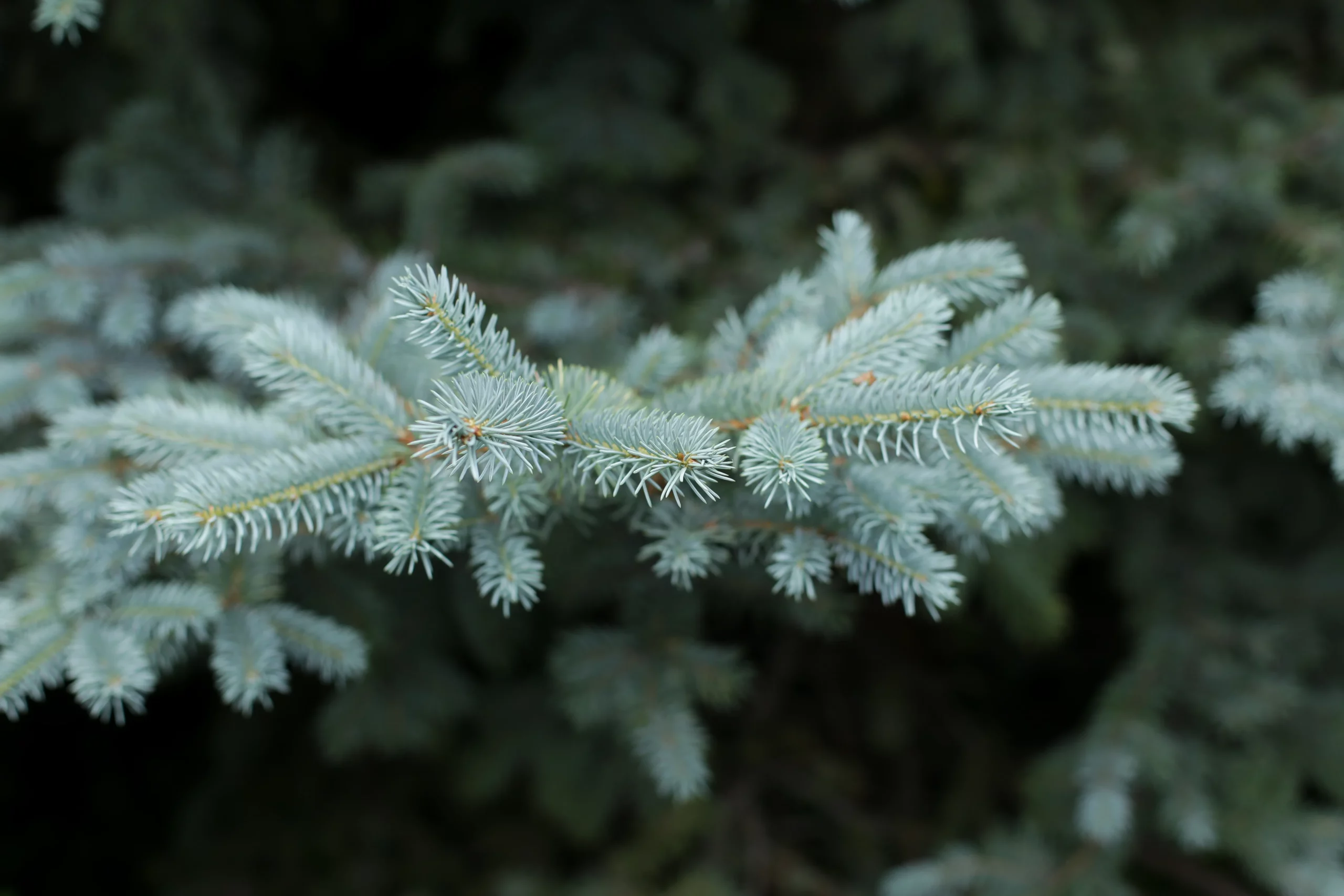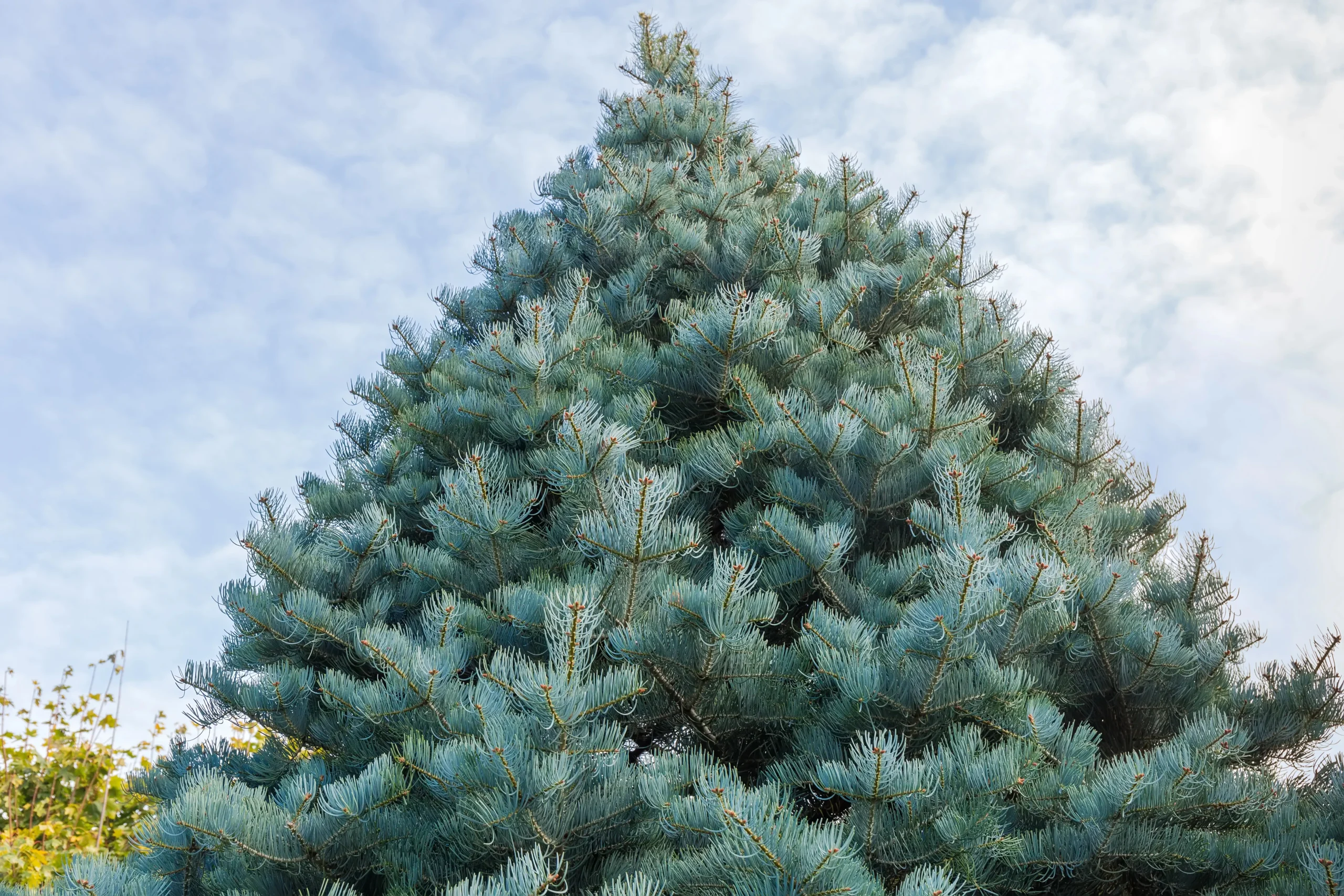Family: Fir
Type: Tree
Other Common Name: Silver Fir, Concolor Fir, Colorado Fir

White Fir, known scientifically as Abies concolor, is a majestic evergreen tree admired for its tall, straight stature and attractive foliage. It’s a popular choice for both ornamental and practical landscaping needs.
This White Fir tree boasts a pyramidal shape with dense, bluish-green needles that are soft to the touch. It’s a distinctive feature that sets it apart from other conifers.
Known for its adaptability and low maintenance, White Fir is an excellent choice for a variety of landscapes. It’s tolerant of urban conditions and offers year-round interest.
Hardiness Zone: 3b-7b
Pet Friendly: Yes
Moisture Preference: Average to moist
Sun Needs: Full sun to partial shade
Growth Rate: Slow
Average Height (feet): 45
Average Spread (feet): 20
Average Life Span (years): 80
Form: Pyramidal
Foliage Color: Blue
Foliage Shape: Needle
Bark Color: Gray
Bark Texture: Smooth
Adding White Fir to your landscape introduces an element of grandeur. Its towering presence creates a striking focal point in large yards.
Plant them as windbreaks or privacy screens. Their dense foliage and tall growth make them perfect for creating secluded, wind-protected areas.
Combine with smaller shrubs and perennials for a layered garden design. The height of White Fir adds a vertical dimension to your landscaping, offering a contrast to lower-growing plants.

In a woodland garden, White Fir contributes to a natural, forest-like environment. It blends seamlessly with other native trees and understory plants.
White Fir is also suitable for urban gardens. Its tolerance for pollution and compact root system make it a practical choice for city landscapes.
In formal gardens, White Fir can be used to create symmetry and structure. Its uniform growth habit is ideal for creating formal sightlines and hedges.
Use White Fir as a specimen tree. Its majestic form and year-round color make it a standout in any garden setting.
Incorporate into a mixed border for height and texture. White Fir adds an evergreen backdrop, allowing seasonal flowers to pop against its foliage.
Plant in groups for a mini forest effect. This is especially effective in larger landscapes, creating a sense of wilderness and natural beauty.
Select our pre-made garden layouts to create a landscape that’s uniquely yours. Simple, smart, and customizable!
In spring, White Fir's lush greenery stands out. New growth emerges, refreshing its appearance and maintaining its dense, vibrant look.
During summer, White Fir remains a robust, green presence in the garden. It provides cool shade and a refreshing, forest-like ambiance.
In fall, while other trees lose their leaves, White Fir retains its beauty. It becomes a focal point amidst the changing colors of the season.
White Fir's beauty is underscored in winter. Its evergreen needles contrast strikingly with snowy landscapes, offering a picturesque winter scene.
White Fir thrives in open spaces where it can receive full sun to partial shade. It’s ideal for large yards, parks, or as a solitary specimen in spacious landscapes.
Full sun to partial shade is best for optimal growth. White Fir needs several hours of sunlight daily to develop its characteristic dense foliage.
This tree prefers well-drained, moist soil but is adaptable to a range of soil types. It tolerates both acidic and alkaline conditions well.
Give White Fir plenty of space to grow. Plant them at least 20 feet apart from other trees or structures to accommodate their mature size.
Plant White Fir in early spring or fall. Cooler temperatures during these times help the tree establish its root system.
Dig a hole as deep as the root ball and twice as wide. Ensure the tree is upright, backfill with soil, and water thoroughly to establish.
Regular watering is crucial in its first few years. Once established, White Fir is relatively drought-tolerant but benefits from occasional deep watering.
Fertilize young trees in spring with a balanced tree fertilizer. Mature White Firs typically don’t require additional fertilization.
Minimal pruning is needed. Remove any dead or diseased branches to maintain health and appearance.
In spring, check for any winter damage and start regular watering. Apply mulch to retain soil moisture and control temperature.
During summer, monitor for pests and continue watering, especially in dry conditions. This ensures healthy growth through the season.
Prepare the tree for winter in fall. Reduce watering and clear debris from around the base to prevent fungal growth.
Winter care is minimal. Ensure young trees are protected from extreme cold with appropriate insulation.
White Fir can reach heights of 40 to 70 feet, making it a striking addition to large landscapes.
Due to its large size, it’s not recommended for small yards. White Fir needs ample space to grow and thrive.
White Fir has a moderate growth rate, adding about 1 to 2 feet per year under optimal conditions.
Sign up below to get exclusive deals, discounts, and new plant collections—delivered straight to your inbox! Plus, stay inspired with the latest gardening tips, landscaping trends, and DIY garden ideas. Start growing with us today!
A big thank you for subscribing to the PBN Design newsletter.
We're thrilled to have you join our community. Get ready for exciting updates, insightful content, and more delivered straight to your inbox.
Stay tuned!
Go backA big thank you for subscribing to the PBN Design newsletter.
We're thrilled to have you join our community. Get ready for exciting updates, insightful content, and more delivered straight to your inbox.
Stay tuned!
Go back